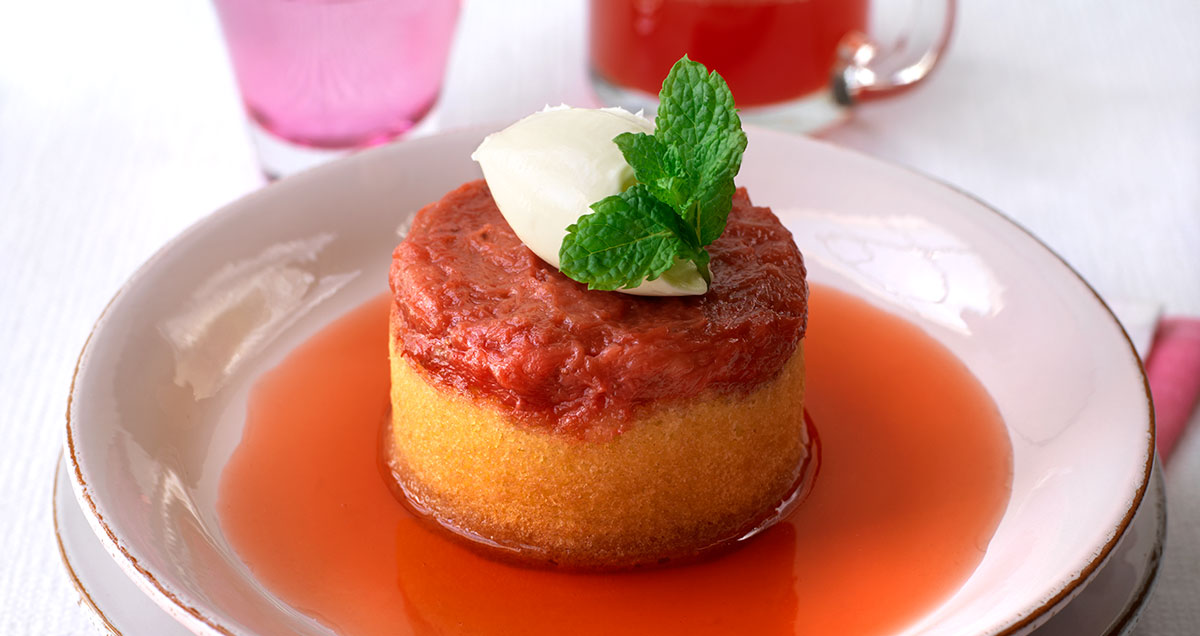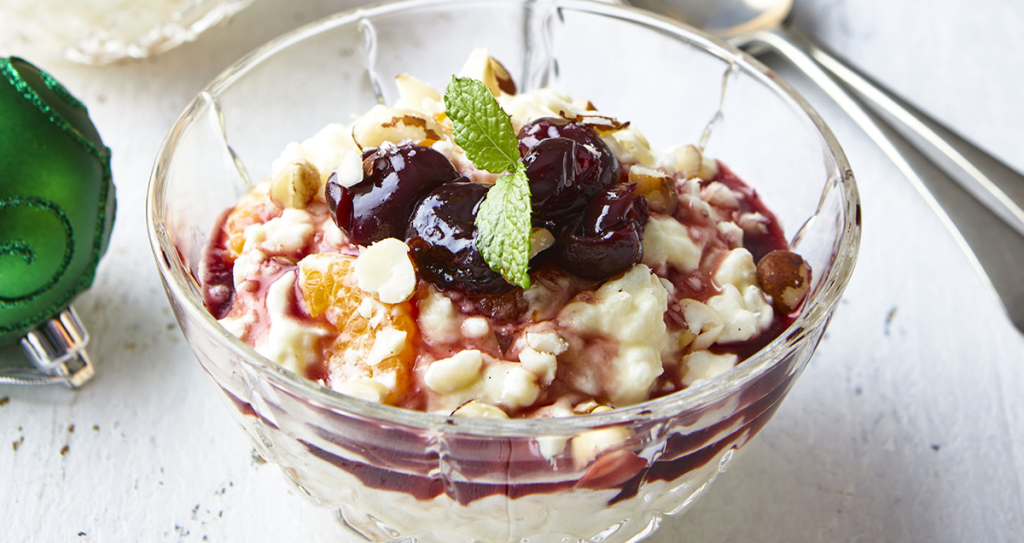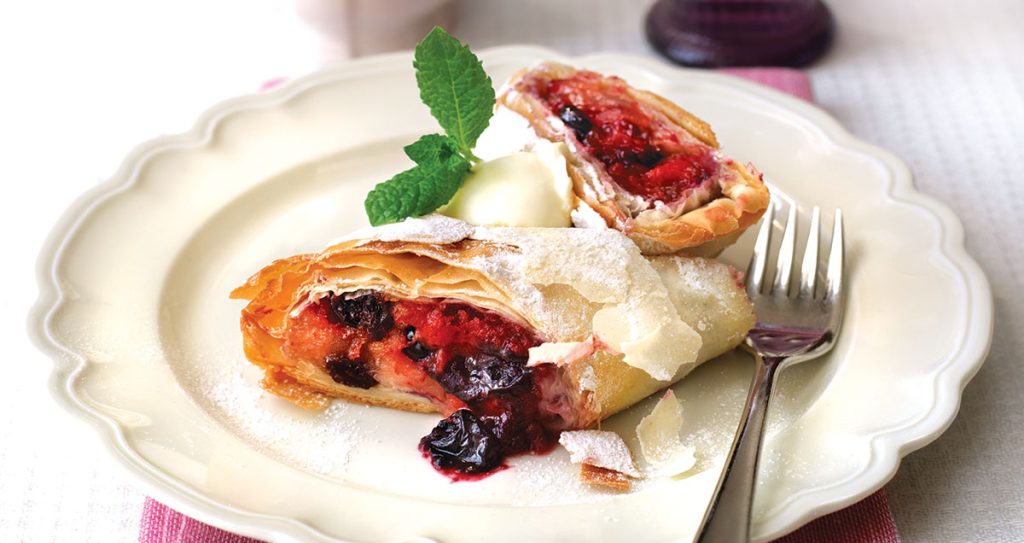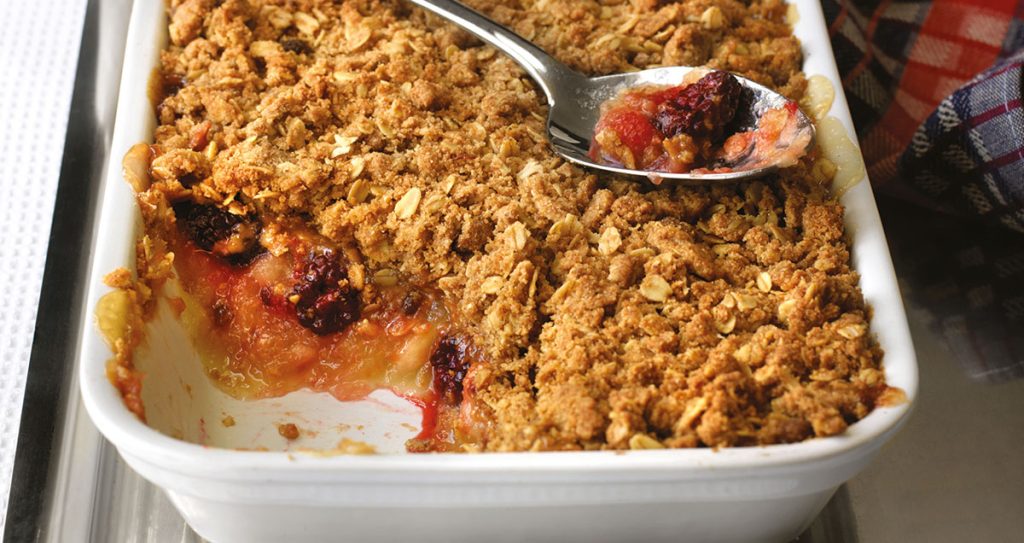, Step by step
Upside-down rhubarb pudding

This recipe is another delicious way to make use of the fantastic British rhubarb that is in season throughout the first half of the year.
Method
-
Step 1
Cook the rhubarb with 75g of the sugar and the ginger over a gentle heat for 2-3 minutes until just starting to soften. Remove from heat. Strain the liquid and reserve it and the rhubarb separately for later.
-
Step 2
Grease 8 individual pudding basins and place a disc of greaseproof paper in the bottom of each.
-
Step 3
Put the butter and the remaining sugar in a bowl and cream together. Stir in a few drops of vanilla extract, then beat in the eggs, adding them a little at a time.
-
Step 4
Sift the flour and carefully fold it into the mixture.
-
Step 5
Place a spoonful of the rhubarb into the bottom of each basin, then add the sponge mixture on top until it is three-quarters of the way up the side of the basin.
-
Step 6
Place into the oven at 160°C for 25 minutes until golden brown.
-
Step 7
Leave to rest for 10 minutes, then turn out onto individual plates.
-
Step 8
Pour some of the juice from the rhubarb around the puddings and serve with crème fraîche.
Nutrition
Although we typically eat rhubarb as a fruit in desserts, it is actually classified as a vegetable because it does not produce seeds. Its long stems are known as petioles.
There are two seasons for rhubarb in the UK. The early crop—in the shops between January and February and a lovely bright pink colour—is forced by growing it indoors under pots. This is mostly done in an area known as the rhubarb triangle in Yorkshire, between Leeds, Bradford and Wakefield.
The second crop, which is grown outside, is in season between about March and June. The stems are thicker and a darker red, and they are tougher, with a stronger flavour.
As with other red and pink coloured fruits, the colour comes from anthocyanins, which give rhubarb useful antioxidant properties.
The first recorded use of rhubarb as a food in England dates to the 17th century, but it was in use as a traditional medicine for several thousand years—employed for its purgative properties!
Consequently, rhubarb was a valuable trading commodity in Europe in Medieval times, when the roots were transported from Asia alongside silks and jewels.


